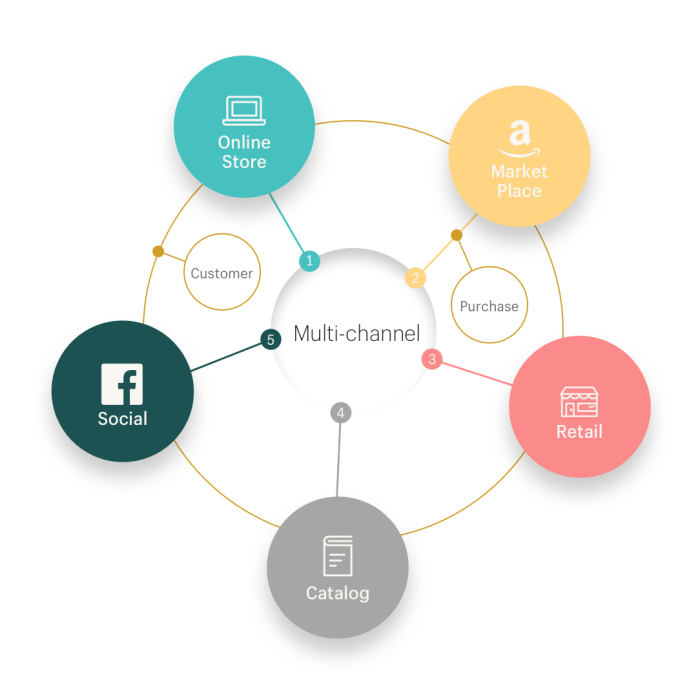
Technology is fast changing the way retailers are selling and customers are shopping. Today customers keep shifting back and forth between offline and online channels. If retailers want to keep up with this pace then they need to quickly adapt to dynamic customer behavior and extend their presence on multiple channels. New age customers are always online so they expect their favorite brands to do the same. To satisfy the needs of customers, retailers will have to slowly expand operations to other selling channels such as online marketplaces like Amazon, eBay, Etsy, e-commerce platforms, social shopping sites, etc. While it may seem overwhelming at first, taking your business multi-channel is the way to go. Let’s deep dive into the many boons of multi-channel selling.
Wider Customer Base
No single shopper is the same and no shopper buys only from one place anymore. Also, customers start their buying process with research first. If they don’t find you where they are looking, say for example on Amazon, or on the web, then they will most likely move to your competitor that can be easily located. On the other hand, some will prefer to mix online and offline shopping, while others straight away visit online marketplaces to fulfill their needs. When retailers establish their presence on multiple channels, they expose their business to a wider audience. By adopting a multi-channel approach, you can attract new customers to your business, and bring existing customers online to provide them the flexibility to shop at their own convenience and time, a privilege they don’t have in a physical store.
Hike in Sales
The main aim of any seller is increased profit by engaging customers as much as possible. Multi-channel selling gives the opportunity to create many engagement points for the customer to make purchasing decisions easy. Additional channels allow retailers to communicate with existing and prospective customers via many touchpoints, helping them to increase their brand visibility and ultimately boost sales.
Get Closer to the Customer
Taking from the previous point, with multiple touchpoints for customer engagement, sellers can glean abundant data on their customers and their buying behavior. This wealth of data can then be used to provide personalized communication for every customer. For example, if a customer browsed for shoes the last time he visited your e-commerce store, you can show him specific ads about shoes on all engagement points to encourage a purchase. Or if a customer added items in their cart but abandoned it later, retailers can send them a discount voucher on those items to push them to complete the purchase. This kind of data-driven marketing can have a positive impact on consumer buying.
Money Tree for Lesser Known Brands
New online channels are giving smaller and lesser known merchants a chance to compete with popular brands. It is only natural that new shoppers coming across your brand for the first time will be distrustful. But if you have a store on a renowned online marketplace, say Amazon or eBay, then that’s your ticket to authenticity. In fact, nearly 65% of shoppers said they felt more comfortable buying from an unknown brand if it was selling on a well-known marketplace. Customers that shop through multiple channels spend more and there is increased customer loyalty and profitability.
Low Risk in Testing New Markets
Before the rise of e-commerce, business expansion was usually regarded as opening up a new physical store. Thanks, to the boom in e-commerce, setting up online stores or adding new channels have become much faster and cheaper. Speaking on the aspect of costs associated with putting up a new store, if your brick-and-mortar store doesn’t do well, all that investment in renting out the place, on interiors and employing staff goes down the drain. With multi-channel selling, you minimize this risk. If one channel doesn’t work for you, then you can simply close your account. You will still have a backup in the form of other e-commerce stores, your website and even your brick-and-mortar store to keep the business afloat.
Finally
There are several variables to consider before expanding your business to multiple channels. But be rest assured, the gains of multi-channel selling trump the challenges that lie in the process. Multi-channel selling is the only strategy that can push retailers to stay in the game.




